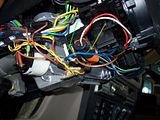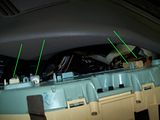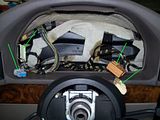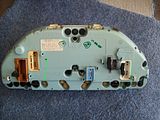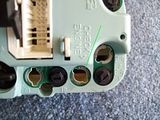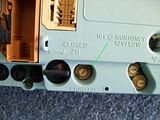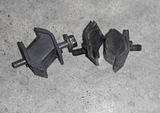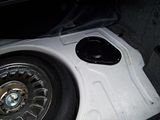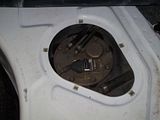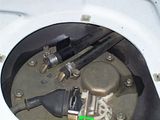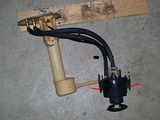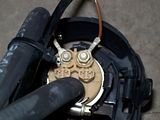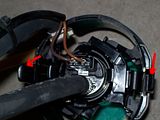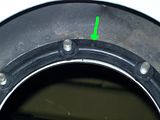Last year I bought a brand new Hyundai Sonata. Below is a letter I recently wrote to them explaining my problems. I sent it off around two weeks ago, still haven't heard anything from them, don't really expect to. I would suggest you look for another brand if you're considering purchasing a Hyundai.
To Whom it May Concern,
On July 1, 2011, I purchased a Hyundai Sonata from the dealership in XXXXX, CA. After a bit of negotiating, I was able to get it for what I believed to be a fair price.
I’m writing this letter to you to inform you why I’ve soured on Hyundai.
With the purchase of the vehicle, came a three month free trial of Sirius/XM radio. While I didn’t really care if it came with the car or not, my wife and I tried it out. We weren’t too impressed with the service. My interaction with the sales representatives from Sirius/XM was very frustrating and troublesome. They constantly harassed me at home by calling continually and bothering me. I finally took one of their calls and had to just hang up the phone on them, they were very pushy and in my opinion, rude. I know this has more to do with them than Hyundai, but your company is the one that decided to offer the three month free deal, so I hold you responsible.
Next came a couple of issues with the vehicle itself. While on a trip from my home in XXXXX, CA to San Antonio, TX, I discovered that my speedometer was off by what I consider to be a large margin, about 2.8% or right at 40 miles in a 1340 mile one way trip. While on this trip, we also got several warnings from the TPMS. We had to stop several times to make sure we weren’t running on flat tires.
When we got home from this trip (we put on over 3000 miles), I brought the car in for it’s 7500 mile service. I notified the Service Department of the issues and they told me they would check it out. When the vehicle service was completed, I was told that nothing was going to be done about the speedometer since it was “within” specs. According to the service manager, the engineers who figure all of that stuff out decided that the inaccuracy of the speedometer was acceptable to them. I was also told that there was a wide spread problem with the TPMS on these cars and it might be to my advantage just to take the bulb out of the warning light.
The 2.8% inaccuracy in my speedometer is not acceptable to me. Telling me to just take the bulb out of the dash to fix my TPMS problems is not acceptable either. It is hard for me to believe in this day and age that a vehicle speedometer could be that far off right from the factory and you can’t get the TPMS to operate properly.
If in fact the problem with my speedometer is acceptable to Hyundai, if makes me wonder what else is going to be inaccurate or troublesome in the future and be acceptable to the company?
A couple of other issues that come to mind. I always take good care of my vehicles. I try my best to get them in for service in a timely manner. I am doing this with the Sonata. On my last oil change, I was promised a free car wash. I called and made an appointment to have the oil changed. Brought it in on time, and was told that the person who does the car washes was not there due to being out delivering parts. Now, they told me I could wait, but when I asked, they said they didn’t know when he would return. My time is worth something too. I’m not going to wait around with no idea when I might get the car washed. One last thing, every time I’ve brought the vehicle in for maintenance, they do a check of the tire pressures. Every time I’ve brought the vehicle home, the tire pressures have been no where near the recommended pressures in the owners manual or printed on the drivers door “B” pillar. This last time, I had the front left tire over inflated by 15 psi. Apparently attention to detail is not common at this dealership service department.
When I purchased the vehicle, I gave my word to the Sales Manager that I would bring in my car there for service for at least a year because they were giving me such a “great deal”. My word is my bond. I planned on doing what I told him, but since they aren’t living up to their side of the deal, I don’t think I need to live up to my side any longer either.
I’m sure you can tell that I’m not a happy camper. It is funny that a company that touts it’s vehicles so much refuses to stand behind them.
To Whom it May Concern,
On July 1, 2011, I purchased a Hyundai Sonata from the dealership in XXXXX, CA. After a bit of negotiating, I was able to get it for what I believed to be a fair price.
I’m writing this letter to you to inform you why I’ve soured on Hyundai.
With the purchase of the vehicle, came a three month free trial of Sirius/XM radio. While I didn’t really care if it came with the car or not, my wife and I tried it out. We weren’t too impressed with the service. My interaction with the sales representatives from Sirius/XM was very frustrating and troublesome. They constantly harassed me at home by calling continually and bothering me. I finally took one of their calls and had to just hang up the phone on them, they were very pushy and in my opinion, rude. I know this has more to do with them than Hyundai, but your company is the one that decided to offer the three month free deal, so I hold you responsible.
Next came a couple of issues with the vehicle itself. While on a trip from my home in XXXXX, CA to San Antonio, TX, I discovered that my speedometer was off by what I consider to be a large margin, about 2.8% or right at 40 miles in a 1340 mile one way trip. While on this trip, we also got several warnings from the TPMS. We had to stop several times to make sure we weren’t running on flat tires.
When we got home from this trip (we put on over 3000 miles), I brought the car in for it’s 7500 mile service. I notified the Service Department of the issues and they told me they would check it out. When the vehicle service was completed, I was told that nothing was going to be done about the speedometer since it was “within” specs. According to the service manager, the engineers who figure all of that stuff out decided that the inaccuracy of the speedometer was acceptable to them. I was also told that there was a wide spread problem with the TPMS on these cars and it might be to my advantage just to take the bulb out of the warning light.
The 2.8% inaccuracy in my speedometer is not acceptable to me. Telling me to just take the bulb out of the dash to fix my TPMS problems is not acceptable either. It is hard for me to believe in this day and age that a vehicle speedometer could be that far off right from the factory and you can’t get the TPMS to operate properly.
If in fact the problem with my speedometer is acceptable to Hyundai, if makes me wonder what else is going to be inaccurate or troublesome in the future and be acceptable to the company?
A couple of other issues that come to mind. I always take good care of my vehicles. I try my best to get them in for service in a timely manner. I am doing this with the Sonata. On my last oil change, I was promised a free car wash. I called and made an appointment to have the oil changed. Brought it in on time, and was told that the person who does the car washes was not there due to being out delivering parts. Now, they told me I could wait, but when I asked, they said they didn’t know when he would return. My time is worth something too. I’m not going to wait around with no idea when I might get the car washed. One last thing, every time I’ve brought the vehicle in for maintenance, they do a check of the tire pressures. Every time I’ve brought the vehicle home, the tire pressures have been no where near the recommended pressures in the owners manual or printed on the drivers door “B” pillar. This last time, I had the front left tire over inflated by 15 psi. Apparently attention to detail is not common at this dealership service department.
When I purchased the vehicle, I gave my word to the Sales Manager that I would bring in my car there for service for at least a year because they were giving me such a “great deal”. My word is my bond. I planned on doing what I told him, but since they aren’t living up to their side of the deal, I don’t think I need to live up to my side any longer either.
I’m sure you can tell that I’m not a happy camper. It is funny that a company that touts it’s vehicles so much refuses to stand behind them.
